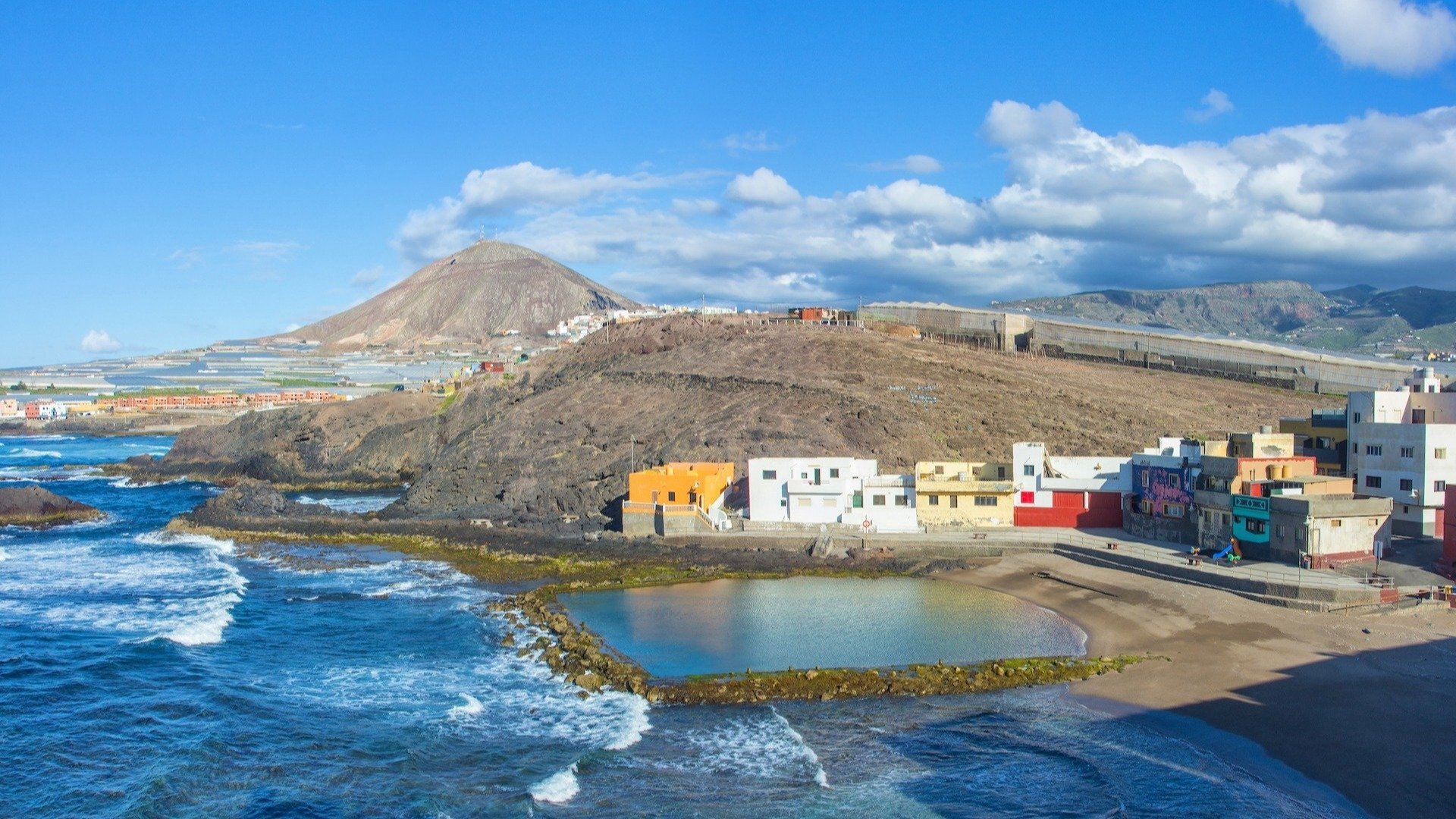Gran Canaria Island
The island of Gran Canaria is a destination chosen by millions of tourists and travelers each year.
Its climate, gastronomy, landscapes, beaches, ocean, inland towns and capital city of Las Palmas are some of its major charms.
Enjoying time outside, relaxing, touring the island by car, on foot or by bicycle, surfing, whale and dolphin watching, and star gazing are just some of the many experiences that make the island of Gran Canaria so appealing.
Whether you visit for a week or a month, you’ll want to come back and get to know the island a little more.

Climate
An average temperature of 24 degrees year-round is a true blessing and allows for a great deal of outdoor activities in just a t-shirt and shorts or bathing suit.
The island’s geographic location and trade winds keep seasons mild throughout the year.

Biosphere Reserve
In 2005, almost half of the Island of Gran Canaria was recognized by Unesco as a Biosphere Reserve.
Its volcanic relief, the diversity of its flora and fauna, the traditional activities carried out by its inhabitants for centuries, and its mountains and coasts have earned it this international recognition.
You can walk through pine forests more than fifteen hundred meters high, looking out over the clouds from above, and you can swim in the crystal clear waters along its 60 km of beaches all throughout the year.

Beaches
You can choose between wilder and more isolated beaches or more popular beaches with more services.
Maspalomas Beach, Playa del Inglés, Puerto Rico, Amadores, Mogán (Little Venice) in the South of the Island.
You also have wilder beaches without buildings like Güigüi, Tiritaña, Guayedra, and El Cabrón for those seeking more privacy and less overcrowding.
Playa de Las Canteras, a spectacular urban beach in the capital Las Palmas, a quiet bay several kilometers long.
Maspalomas Beach, a mixture of desert and oasis, a unique natural area home to a great variety of ecosystems.
The dunes, which change the landscape every day, are one of the main tourist attractions in the area.
You can choose between beaches with golden sand and beaches with black volcanic sand.

Towns to Visit
El Puerto de Mogán is a quiet fishing village with a small beach that gives it a special charm. Its unique architecture and gardens bursting with flowers mix with bridges that allow you to stroll among sea water canals.
En Agaete you can swim or sunbathe on the small beach in its port or at the salt basins, go fishing, dine at a local restaurant, walk or just relax.
Take your time getting to know the small villages of Gran Canaria as there are many, like Teror or Tejeda. Their friendly people and rich traditions will make you feel welcome there.

The Capital, Las Palmas de Gran Canaria
There are few cities with such a spectacular beachfront. It truly is a luxury to be able to walk from the beach to shops, bars, restaurants and museums.
You can visit the city of Las Palmas de Gran Canaria at your own pace or on a bus tour that offers a panoramic view of the capital.The Neocolonial architecture, cathedral, and Casa de Colón in the Vegueta neighborhood, reflect its over five hundred years of history and Atlantic personality of La Palmas de Gran Canaria, where historically many cultures have crossed paths.
This is where you begin your journey of discovering Gran Canaria.

Nublo Rural Park
It is the largest natural area on the island, with several roads in the north and west of the island giving access to the park and its lookout points.
It is home to 30 towns and is the largest natural area in Gran Canaria. It has been considered a Biosphere Reserve since 2005.
Bentayga was a place of worship for the aborigines of the archipelago until the 15th century. Roque Nublo is a vestige of a geologically spectacular volcanic formation.




